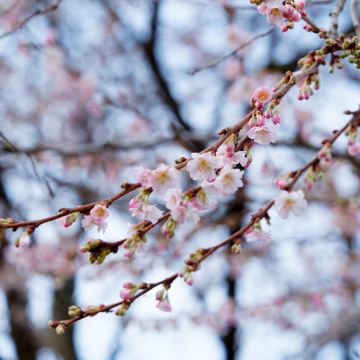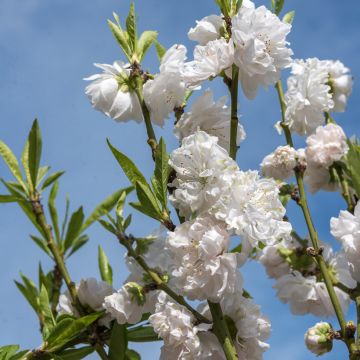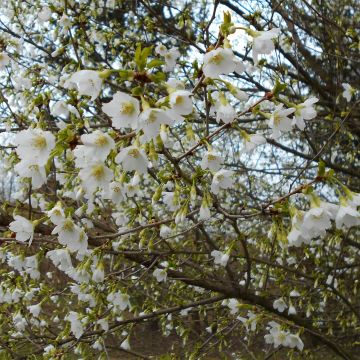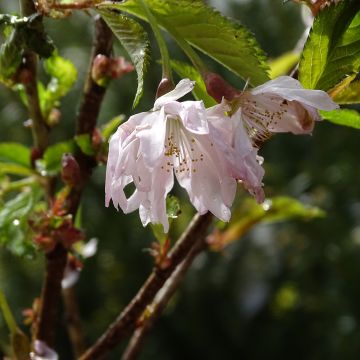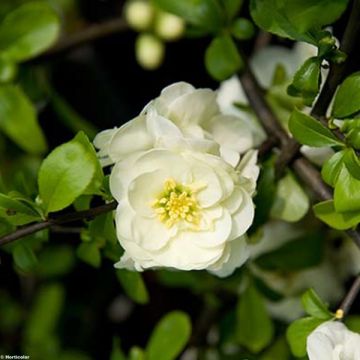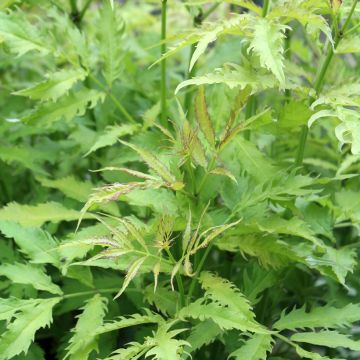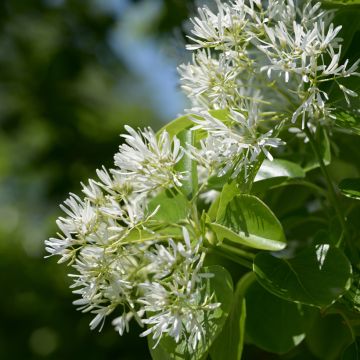

Prunus Okame - Cherry


Prunus Okame - Cherry


Prunus Okame - Cherry


Prunus Okame - Cherry


Prunus Okame - Cherry


Prunus Okame - Cherry
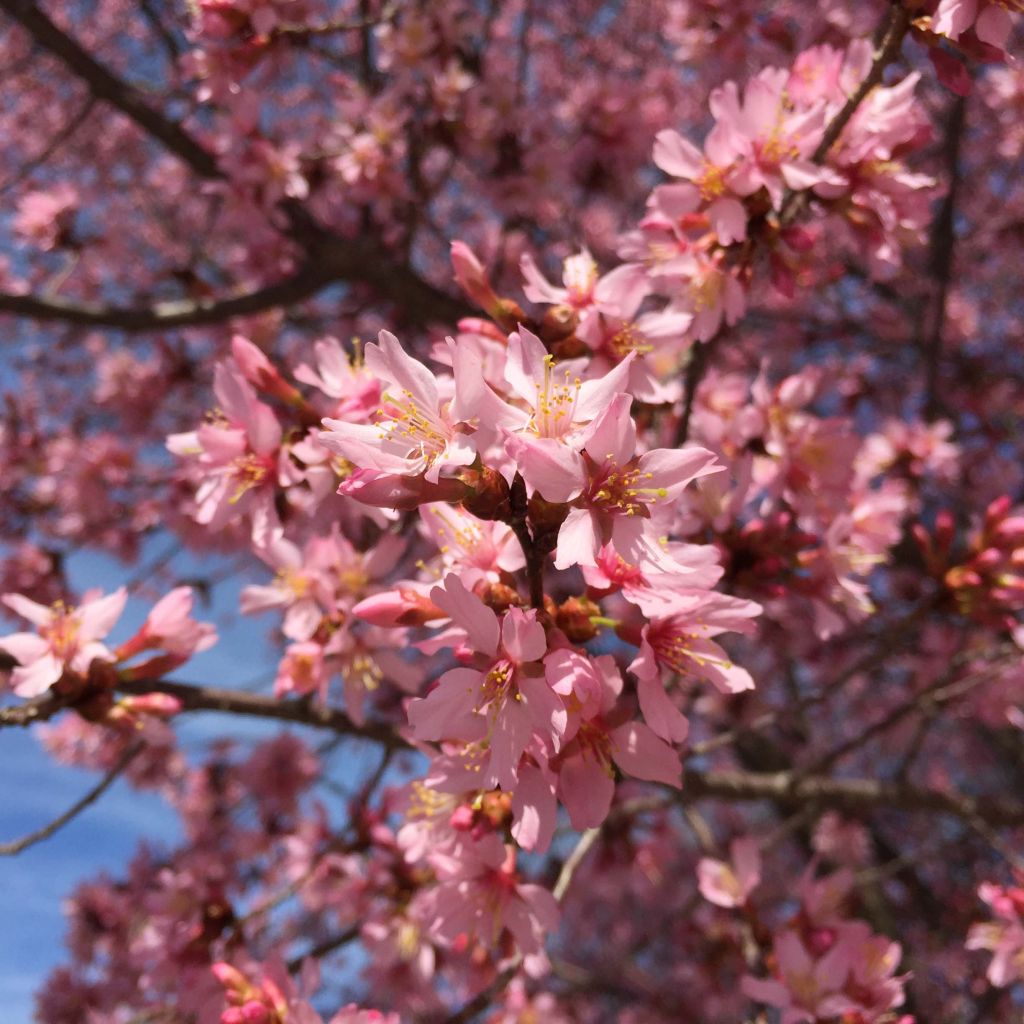

Prunus Okame - Cherry


Prunus Okame - Cherry
Prunus Okame - Cherry
Prunus campanulata x incisa Okame
Cherry
Arrived in spring 2021 with numerous broken stems and the trunk (or main stem) topped during transportation. It was more of a clump, with shoots about twenty centimeters tall at its base. The soil was well worked/loosened to suit it, and it has treated us to its timid flowering every late winter for the past 2 years, but the tree itself is not growing. It is wisely specified as "slow growth"... I should have opted for a variety with faster growth.
Sarah, 10/03/2023
Special offer!
Receive a €20 voucher for any order over €90 (excluding delivery costs, credit notes, and plastic-free options)!
1- Add your favorite plants to your cart.
2- Once you have reached €90, confirm your order (you can even choose the delivery date!).
3- As soon as your order is shipped, you will receive an email containing your voucher code, valid for 3 months (90 days).
Your voucher is unique and can only be used once, for any order with a minimum value of €20, excluding delivery costs.
Can be combined with other current offers, non-divisible and non-refundable.
Home or relay delivery (depending on size and destination)
Schedule delivery date,
and select date in basket
This plant carries a 24 months recovery warranty
More information
We guarantee the quality of our plants for a full growing cycle, and will replace at our expense any plant that fails to recover under normal climatic and planting conditions.
Would this plant suit my garden?
Set up your Plantfit profile →
Description
Prunus 'Okame' is a bushy flowering cherry tree from Japan that is particularly floriferous. This old horticultural hybrid, resulting from the cross-breeding of two botanical species, possesses the strength of minimally cultivated plants and concentrates the extraordinary flowering of its two parents. When young, it forms a dense bush and eventually becomes a small, highly ornamental tree that beautifully heralds the return of spring. In early spring, a multitude of bell-shaped flowers, with bright carmine pink petals and yellow stamens, open in succession, forming generous pendulous clusters. Its foliage, which emerges after the flowering, takes on beautiful autumn colours, and in winter, its lustrous bark is revealed in a rich burgundy hue.
Prunus 'Okame', from the large family of Rosaceae, is the result of a cross-breeding between Prunus campanulata, native to Taiwan and with almost red campanulate flowers, and Prunus incisa with its abundant white-pink flowering, spontaneously found on the slopes of Mount Fuji in Japan.
'Okame', having a rather slow growth, shows a bushy and rounded habit for about ten years, reaching a height of 2.50m (8ft 2in) and a width of 2m (6ft 7in). It then grows taller, revealing a short trunk topped by a gracefully spreading crown. Eventually, it will reach a height of 4m (13ft 1in) and a spread of 3m (9ft 10in). The bark covering the trunk is smooth and glossy, with a dark brown-red colour. Before the foliage appears, in March or April depending on the region, a profusion of small campanulate and lightly scented flowers, measuring 2 to 2.5cm (0.8 to 1in) in diameter, open in a vibrant carmine pink colour. The deciduous foliage appears after the flowering. The leaves are bronze when they emerge, green in summer, and turn red-orange in autumn. They are entire, lanceolate, measure 3 to 6cm (1.2 to 2.4in) in length, and have finely dentate margins.
Its twisted form, created by sinuous branches, makes the flowering cherry tree suitable for bonsai cultivation. With its slow growth, this small tree, a symbol of renewal, is suitable for small gardens as well as for container cultivation on a terrace. It can be planted in borders or as a standalone specimen, in hedges, and also in rows. 'Okame', being undemanding, thrives in ordinary soil as long as it is sufficiently deep, tolerates heat and the presence of limestone in the soil. It can be cultivated in most regions, from north to south. For example, in a hedge or border, it can be associated with other spring-flowering shrubs, either simultaneous or staggered, such as ornamental apple trees, flowering peaches, Chinese almond trees, hawthorns, and more.
Prunus Okame - Cherry in pictures


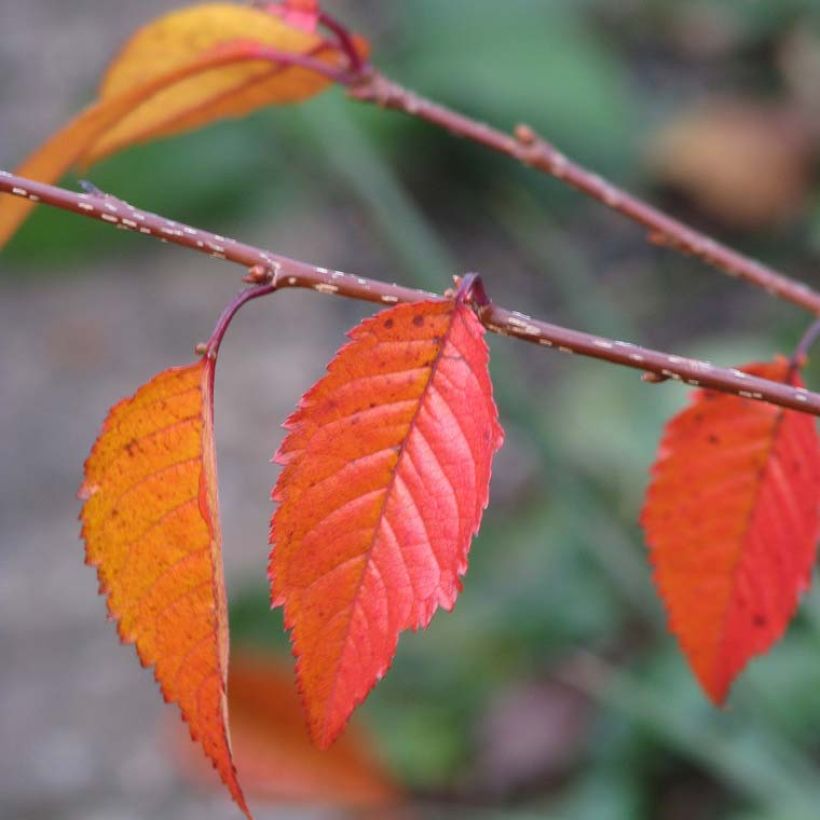



Plant habit
Flowering
Foliage
Botanical data
Prunus
campanulata x incisa
Okame
Rosaceae
Cherry
Cultivar or hybrid
Other Prunus
View all →Planting and care
Prunus 'Okame' is planted in spring or autumn, depending on the climate. It thrives in full sun in any fairly rich, well-drained, and supple soil. It tolerates the presence of limestone in the soil, but not excessively, and does not appreciate excessively acidic and poor soils. Once established, it can do without watering in summer if the soil remains moist at depth. Water during abnormally dry and hot weather. During planting, mix your soil with compost at a ratio of 50%. Dig a large planting hole. Apply a flowering bush fertilizer every spring. Be careful of late frosts that could damage early flowering. That's why it is preferable to place the prunus in a somewhat sheltered location from dry and cold winds.
Planting period
Intended location
Care
Planting & care advice
-
, onOrder confirmed
Reply from on Promesse de fleurs
Similar products
Haven't found what you were looking for?
Hardiness is the lowest winter temperature a plant can endure without suffering serious damage or even dying. However, hardiness is affected by location (a sheltered area, such as a patio), protection (winter cover) and soil type (hardiness is improved by well-drained soil).

Photo Sharing Terms & Conditions
In order to encourage gardeners to interact and share their experiences, Promesse de fleurs offers various media enabling content to be uploaded onto its Site - in particular via the ‘Photo sharing’ module.
The User agrees to refrain from:
- Posting any content that is illegal, prejudicial, insulting, racist, inciteful to hatred, revisionist, contrary to public decency, that infringes on privacy or on the privacy rights of third parties, in particular the publicity rights of persons and goods, intellectual property rights, or the right to privacy.
- Submitting content on behalf of a third party;
- Impersonate the identity of a third party and/or publish any personal information about a third party;
In general, the User undertakes to refrain from any unethical behaviour.
All Content (in particular text, comments, files, images, photos, videos, creative works, etc.), which may be subject to property or intellectual property rights, image or other private rights, shall remain the property of the User, subject to the limited rights granted by the terms of the licence granted by Promesse de fleurs as stated below. Users are at liberty to publish or not to publish such Content on the Site, notably via the ‘Photo Sharing’ facility, and accept that this Content shall be made public and freely accessible, notably on the Internet.
Users further acknowledge, undertake to have ,and guarantee that they hold all necessary rights and permissions to publish such material on the Site, in particular with regard to the legislation in force pertaining to any privacy, property, intellectual property, image, or contractual rights, or rights of any other nature. By publishing such Content on the Site, Users acknowledge accepting full liability as publishers of the Content within the meaning of the law, and grant Promesse de fleurs, free of charge, an inclusive, worldwide licence for the said Content for the entire duration of its publication, including all reproduction, representation, up/downloading, displaying, performing, transmission, and storage rights.
Users also grant permission for their name to be linked to the Content and accept that this link may not always be made available.
By engaging in posting material, Users consent to their Content becoming automatically accessible on the Internet, in particular on other sites and/or blogs and/or web pages of the Promesse de fleurs site, including in particular social pages and the Promesse de fleurs catalogue.
Users may secure the removal of entrusted content free of charge by issuing a simple request via our contact form.
The flowering period indicated on our website applies to countries and regions located in USDA zone 8 (France, the United Kingdom, Ireland, the Netherlands, etc.)
It will vary according to where you live:
- In zones 9 to 10 (Italy, Spain, Greece, etc.), flowering will occur about 2 to 4 weeks earlier.
- In zones 6 to 7 (Germany, Poland, Slovenia, and lower mountainous regions), flowering will be delayed by 2 to 3 weeks.
- In zone 5 (Central Europe, Scandinavia), blooming will be delayed by 3 to 5 weeks.
In temperate climates, pruning of spring-flowering shrubs (forsythia, spireas, etc.) should be done just after flowering.
Pruning of summer-flowering shrubs (Indian Lilac, Perovskia, etc.) can be done in winter or spring.
In cold regions as well as with frost-sensitive plants, avoid pruning too early when severe frosts may still occur.
The planting period indicated on our website applies to countries and regions located in USDA zone 8 (France, United Kingdom, Ireland, Netherlands).
It will vary according to where you live:
- In Mediterranean zones (Marseille, Madrid, Milan, etc.), autumn and winter are the best planting periods.
- In continental zones (Strasbourg, Munich, Vienna, etc.), delay planting by 2 to 3 weeks in spring and bring it forward by 2 to 4 weeks in autumn.
- In mountainous regions (the Alps, Pyrenees, Carpathians, etc.), it is best to plant in late spring (May-June) or late summer (August-September).
The harvesting period indicated on our website applies to countries and regions in USDA zone 8 (France, England, Ireland, the Netherlands).
In colder areas (Scandinavia, Poland, Austria...) fruit and vegetable harvests are likely to be delayed by 3-4 weeks.
In warmer areas (Italy, Spain, Greece, etc.), harvesting will probably take place earlier, depending on weather conditions.
The sowing periods indicated on our website apply to countries and regions within USDA Zone 8 (France, UK, Ireland, Netherlands).
In colder areas (Scandinavia, Poland, Austria...), delay any outdoor sowing by 3-4 weeks, or sow under glass.
In warmer climes (Italy, Spain, Greece, etc.), bring outdoor sowing forward by a few weeks.
































